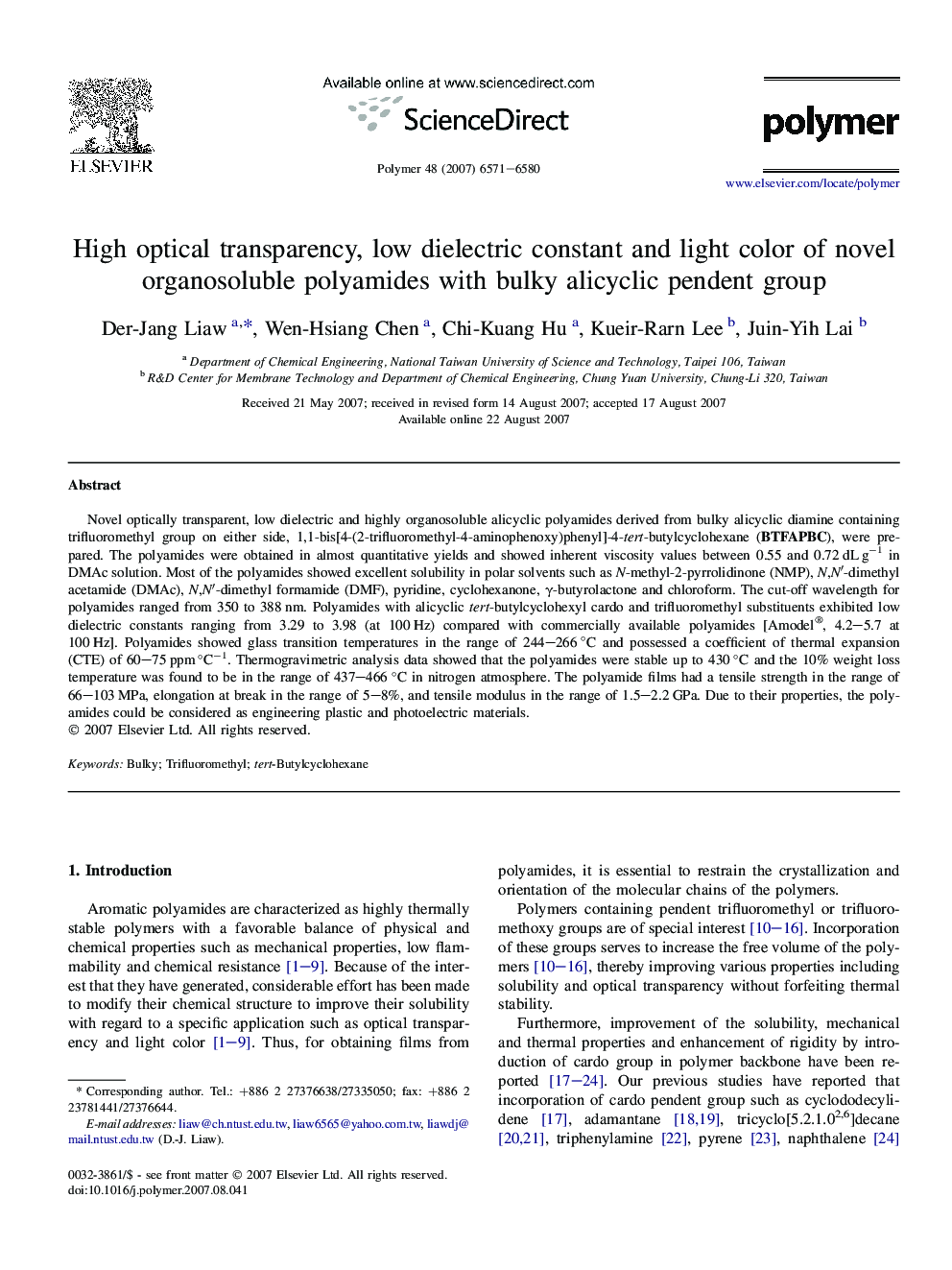| Article ID | Journal | Published Year | Pages | File Type |
|---|---|---|---|---|
| 5188393 | Polymer | 2007 | 10 Pages |
Abstract
Novel optically transparent, low dielectric and highly organosoluble alicyclic polyamides derived from bulky alicyclic diamine containing trifluoromethyl group on either side, 1,1-bis[4-(2-trifluoromethyl-4-aminophenoxy)phenyl]-4-tert-butylcyclohexane (BTFAPBC), were prepared. The polyamides were obtained in almost quantitative yields and showed inherent viscosity values between 0.55 and 0.72 dL gâ1 in DMAc solution. Most of the polyamides showed excellent solubility in polar solvents such as N-methyl-2-pyrrolidinone (NMP), N,Nâ²-dimethyl acetamide (DMAc), N,Nâ²-dimethyl formamide (DMF), pyridine, cyclohexanone, γ-butyrolactone and chloroform. The cut-off wavelength for polyamides ranged from 350 to 388 nm. Polyamides with alicyclic tert-butylcyclohexyl cardo and trifluoromethyl substituents exhibited low dielectric constants ranging from 3.29 to 3.98 (at 100 Hz) compared with commercially available polyamides [Amodel®, 4.2-5.7 at 100 Hz]. Polyamides showed glass transition temperatures in the range of 244-266 °C and possessed a coefficient of thermal expansion (CTE) of 60-75 ppm °Câ1. Thermogravimetric analysis data showed that the polyamides were stable up to 430 °C and the 10% weight loss temperature was found to be in the range of 437-466 °C in nitrogen atmosphere. The polyamide films had a tensile strength in the range of 66-103 MPa, elongation at break in the range of 5-8%, and tensile modulus in the range of 1.5-2.2 GPa. Due to their properties, the polyamides could be considered as engineering plastic and photoelectric materials.
Keywords
Related Topics
Physical Sciences and Engineering
Chemistry
Organic Chemistry
Authors
Der-Jang Liaw, Wen-Hsiang Chen, Chi-Kuang Hu, Kueir-Rarn Lee, Juin-Yih Lai,
